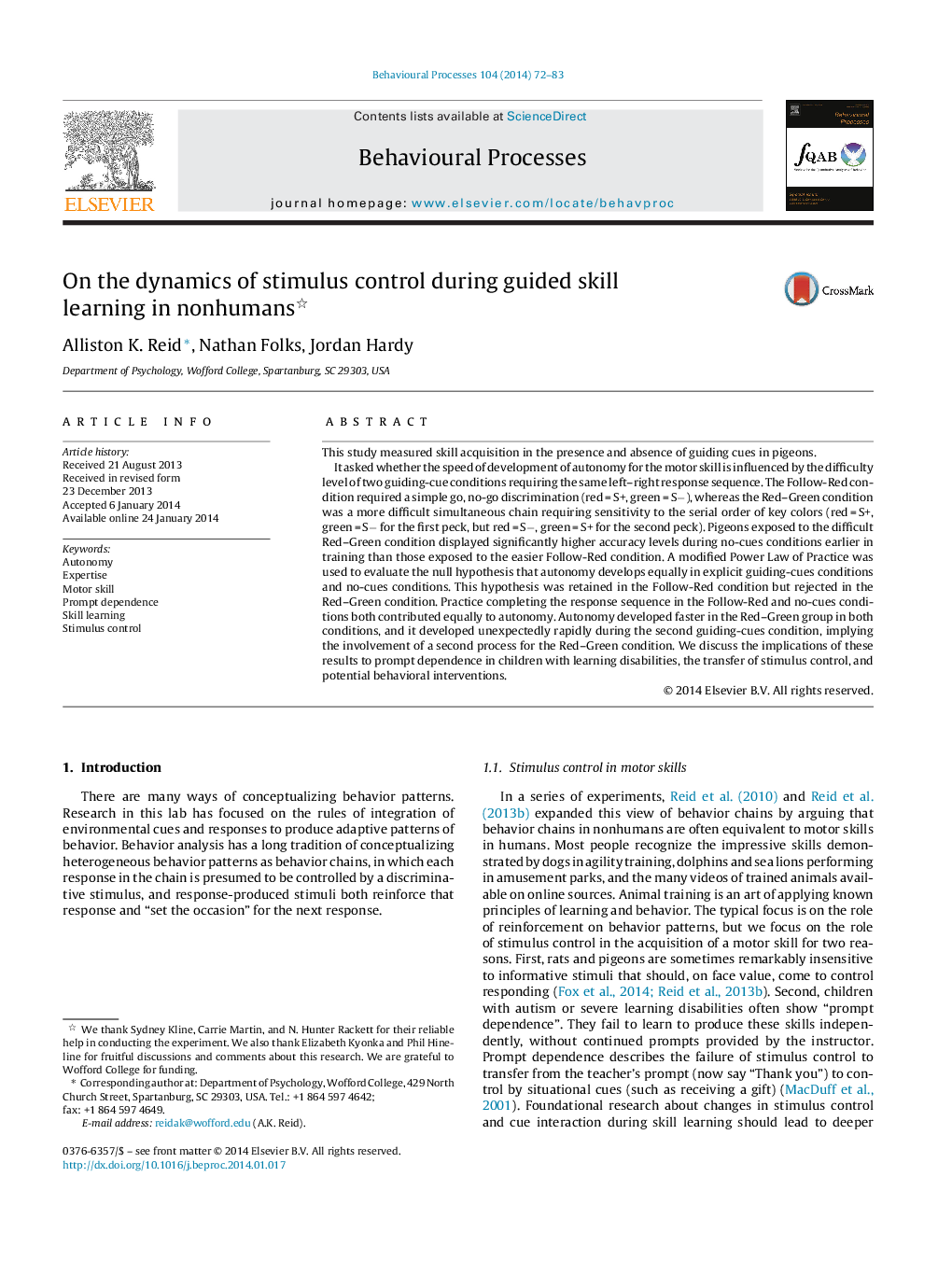| کد مقاله | کد نشریه | سال انتشار | مقاله انگلیسی | نسخه تمام متن |
|---|---|---|---|---|
| 2426759 | 1553175 | 2014 | 12 صفحه PDF | دانلود رایگان |
• We measured skill acquisition in the presence and absence of guiding cues in pigeons.
• Difficult guiding-cue conditions produced greater autonomy than easy conditions.
• A modified Power Law of Practice modeled each condition.
• We discuss implications for prompt dependence and transfer of stimulus control.
This study measured skill acquisition in the presence and absence of guiding cues in pigeons.It asked whether the speed of development of autonomy for the motor skill is influenced by the difficulty level of two guiding-cue conditions requiring the same left–right response sequence. The Follow-Red condition required a simple go, no-go discrimination (red = S+, green = S−), whereas the Red–Green condition was a more difficult simultaneous chain requiring sensitivity to the serial order of key colors (red = S+, green = S− for the first peck, but red = S−, green = S+ for the second peck). Pigeons exposed to the difficult Red–Green condition displayed significantly higher accuracy levels during no-cues conditions earlier in training than those exposed to the easier Follow-Red condition. A modified Power Law of Practice was used to evaluate the null hypothesis that autonomy develops equally in explicit guiding-cues conditions and no-cues conditions. This hypothesis was retained in the Follow-Red condition but rejected in the Red–Green condition. Practice completing the response sequence in the Follow-Red and no-cues conditions both contributed equally to autonomy. Autonomy developed faster in the Red–Green group in both conditions, and it developed unexpectedly rapidly during the second guiding-cues condition, implying the involvement of a second process for the Red–Green condition. We discuss the implications of these results to prompt dependence in children with learning disabilities, the transfer of stimulus control, and potential behavioral interventions.
Journal: Behavioural Processes - Volume 104, May 2014, Pages 72–83
